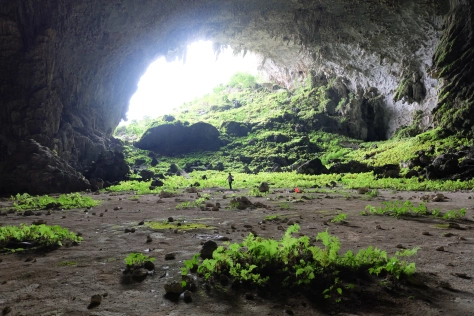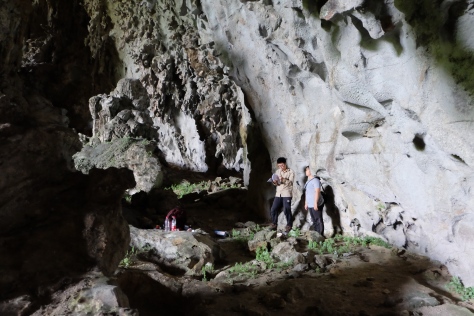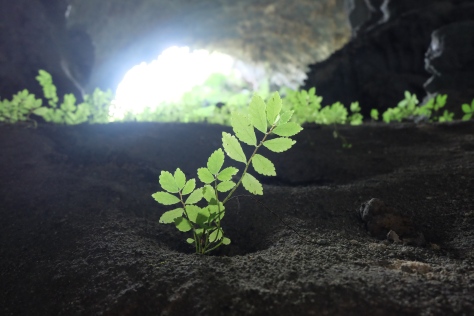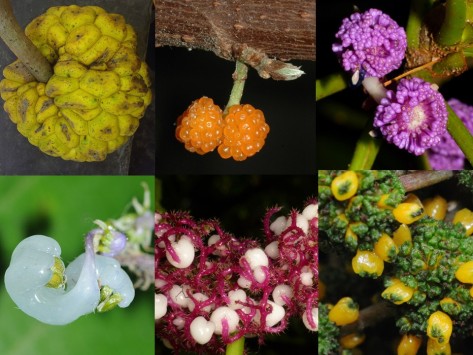
Brightly coloured or fleshy fruit are not what you would associate with nettles. Indeed neither would most botanists who study them in a herbarium where once brightly coloured intricately shaped structures are reduced to congealed dark brown blobs. It is thanks to field work, and the enthusiasm of many amateur naturalists and their cameras that their beauty and complexity is becoming better known. Fleshy-fruited nettles are found across the family, comprising probably 1/4 of the genera. Nettles are very inventive in producing these fruits, with stalks, petals, fruiting branches or bracts being re-purposed following flowering. Although I work on nettles and so am naturally biased, I can’t think of another plant family that has come up with so many ways to produce a tasty morsel for a bird or mammal, or which produces such complex shaped fruits.
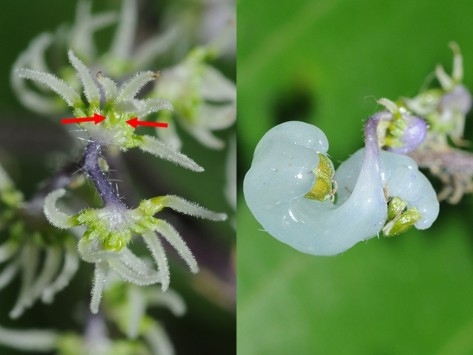
In the case of the tree from Taiwan and the Philippines, Discocnide meyeniana, the three tiny and unequal green petals around each ovary swell up into a ghostly white cradle which likely flags the exposed seed to potential dispersers. In this case likely a small bird. Another species with unusual fleshy fruits is a small tree from the Dominican Republic, Gyrotaenia microcarpa. In this species it is the fused flowering branches which become fleshy, expanding in fruit to leave the seeds exposed in small clusters on the outside, a bit like a misshapen strawberry.
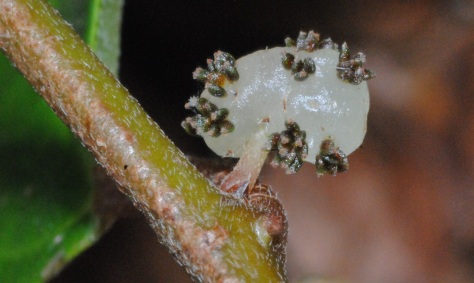
In several species fruits designed to attract consumers also have stinging hairs. This is the case of the Latin American shrub Urera baccifera. In this species, not only do the tiny green petals become white and swell up to conceal the seed, but their flowering branches and stalks become bright magenta and fleshy, curling protectively over the white berries brandishing hypodermic stinging hairs. This suggests that not any animal is welcome to take the fruit. Whatever feeds on the berry will need to delicately free it without getting stung.
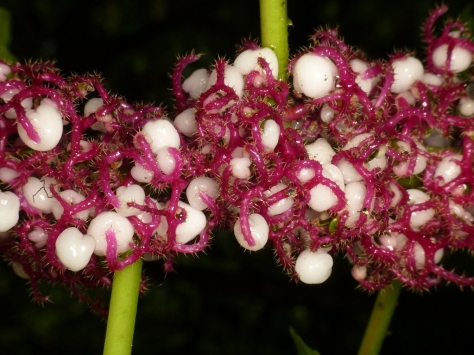
Probably the strangest looking fruit is that of Procris, a group of succulent species from Asia, the Pacific and Africa. In these plants the flower stalks all fuse to form a swollen foot. In fruit, together with the reduced petals at the ovary’s base, this becomes fleshy and when wet the whole structure is covered by a thick slime. It is hard to imagine what kind of animal this fruit is aiming to attract!
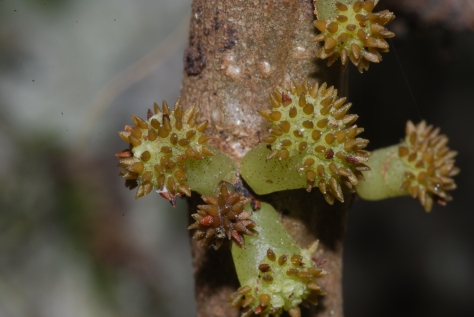
I hope that this very brief and subjective survey of nettle fruits demonstrates how innovative and surprising plants (and nettles in particular) can be.

